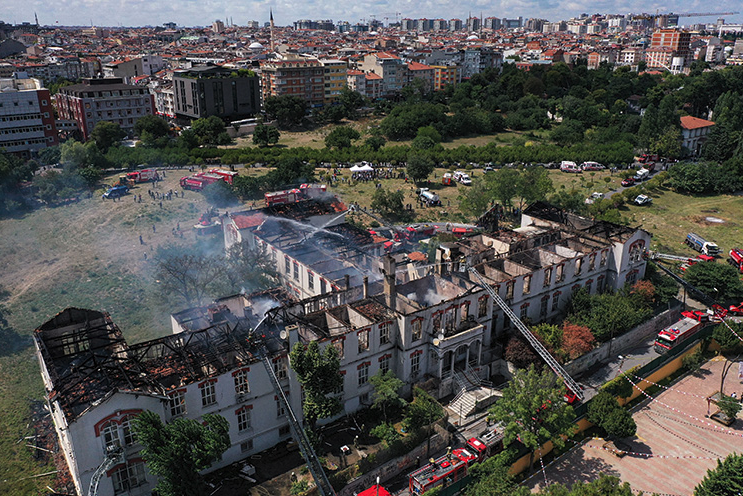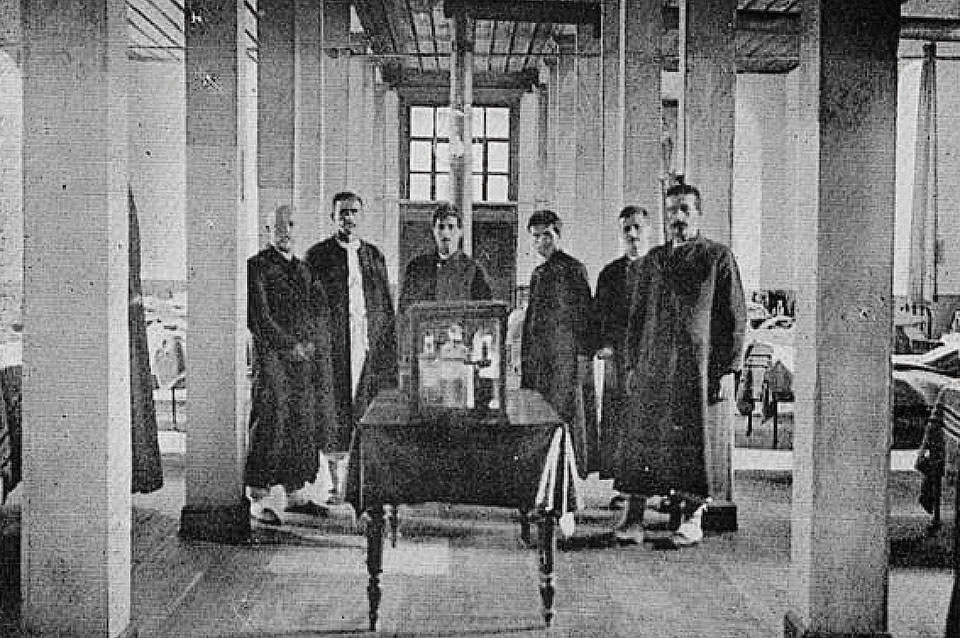
Lakis Vigas, one of the Roman pillars of the entire diaspora, was breathing heavily on the other end of the telephone line. He was outside the nursing home in Balukli, which caught fire yesterday afternoon. He rushed with other citizens to help transport the old people who were in the wings of the burning building. “Fortunately, government services responded immediately. Firefighters arrived and at the same time caught up and took out our tenants, who were about 100 people. They finished with a modern structure that was provided to us for this reason nearby. It’s too early to talk about it, but, according to my estimates, 80-90 of those saved are definitely from our community,” he managed to tell me, specifying that even when the disaster is over, they should see what will happen to their care, so as architecture, an annex to the Balukli hospital, lost its roof and was badly damaged.The next time period cannot be used.
“For the Greek element of Istanbul, this nursing home is the last straw. The plight of people without family or relatives, who often do not have the financial comfort of having someone around to go about their daily business. But we are here so as not to leave anyone without proper care,” he told “K”. Balukli is the Ark of History for the Greeks of the City, fully reflecting the social power they wielded in previous centuries. In a wonderful book written by Fokion Sidiropoulos and published The Foundation of Great Hellenism, entitled “National Charitable Warehouses – Balukli Hospital”, tells about the origin and development of the institution of hospitals founded by Hellenism in the city in the 18th century.

There were four in total, and one of them was the plague hospital of Balukli or Goulades. These hospitals followed an independent historical path until 1794, when they were included in the General Fund under the control of the Tax Office, and in 1839, after a series of epidemics that struck Constantinople, they merged into the Balukli Hospital in Eptapyrgio. However, his fate followed the fluctuations in Greek-Turkish relations after the arrival of the Young Turks and, of course, the catastrophe in Asia Minor. In 1922, the current charter was restructured and given the new name Balikli Rum Hastahanesi, which has been preserved to this day.

“Our community received a big blow today. One of its most important charitable institutions, in which our elderly brothers found care and warmth, suffered from a catastrophic fire,” said the Ecumenical Patriarch. Bartholomew. “We thank God that there were no casualties, and we thank the state and municipal authorities and firefighters, workers at the nursing home and adjacent hospital, and all those who volunteered to help save food, as well as in the fight to extinguish the fire. . Human lives matter. Buildings, structures, material things can be restored. We are hurt for what happened, but we will overcome this test,” he stressed.

Being the property of a vaqf, Valukli suffers from unfair restrictions often imposed by Turkey. The irony of fate is that three days before, on August 2, the Ecumenical Patriarch, after performing a divine service in the holy church of the saints of Anarjiro, located in a nursing home, expressed his sadness over the fact that the authorities of the neighbor, after years, had given up the right to elect new administrations to donation bodies, they excluded the Balukli hospital, which also has the largest property, with generous inheritances from prominent Romans. Next to the hospital and nursing home is the cemetery of the same name, where our patriarchs are buried.
Source: Kathimerini
Robert is an experienced journalist who has been covering the automobile industry for over a decade. He has a deep understanding of the latest technologies and trends in the industry and is known for his thorough and in-depth reporting.